| Garbo's Garbo |
|
| Introduction |
September 18, 2005, marked the centennial of the Garbo's birth. Informal images were scarced in her grandnephew Scott Reisfield's selection from her archives. Exquisite studio portraits and polished production stills, most of them taken by, respectively, her favoured portraitist, Clarence Sinclair Bull, and her preferred on-set photographer, Milton Brown. The work of other hands--Bull's fellow Hollywood portraitists Ruth Harriet Louise and George Hurrell, Edward Steichen, Nicholas Muray, Cecil Beaton, and Arnold Genthe--also appears. A book was released, Garbo: Portraits From Her Private Collection, and an exhibition, Garbo's Garbo, was held in several cities around the world and both were a big success.
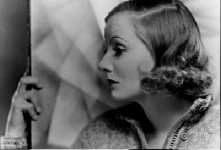
The Portraits |
The images date from 1923 to 1951 and total about 1,100. Half are 11-by-14 silver or gelatine silver studio portraits from each of her films. The photographs, selected by Reisfield and New York curator Robert Dance, chart Garbo's career through studio portraits taken by such legendary photographers as George Hurrell, Clarence Sinclair Bull and Ruth Harriet Louise, who is credited with creating the Garbo mystique with her lighting.
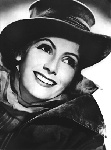
With them will be a dozen vintage outfits from the 1940s and 1950s from Derek Reisfield's collection that Garbo wore in her personal life as a tailored, earth-toned New Yorker. There will also be a dozen vintage posters from her movies.
 
The photos were stored at the Reisfield's family attic from 1960 to 1995 and virtually forgotten.All were in pristine condition, still in their original sleeves as though Garbo had poked them in a box without looking at them.
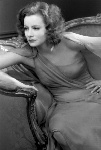 
Scott Reisfield: “I think it was the classic case of a New Yorker with no space taking boxes out to a relative in the suburbs. When I took an interest in photography in 1995, my mom said she had some old photos in the attic that I should look at. As soon as I saw then, I knew they were unique.”
Dance said the emotional response to Garbo's photos proves that she was as good a portrait subject as an actress.
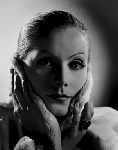
Robert Dance: “She allowed portraits to be taken only one day for each film. In a typical day, the photographer would take 80 or 90. Unlike other subjects where only 10 would be usable, virtually all of hers would be. What you are struck by is how modern she looks. All the stars today, whether Angelina or Nicole or whoever, if they could look like that, they would. Garbo did not have the stylishness of a Joan Crawford or Gloria Swanson. She was something quite timeless.”
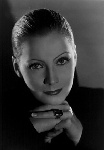 
Robert Dance: “She was very seductive as a performer. But she was also the greatest portrait subject in America at the time. The control of her face is quite remarkable. They were dealing with those huge cameras and she had to hold the pose. She was so gifted as a subject. She could 'act' for the still camera as well as she could act for the motion picture camera. She was hypnotic.”
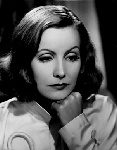
Garbo's great-nephew said he finally came to an appreciation of her place in cinema history when he was in college. By then, he'd seen most of her films and read some of the biographies, many containing errors, not just of details but of 'whole ideas.'
 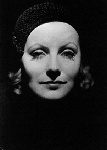
Scott Reisfield: “Choosing the 80 photos in the exhibit from the 1,100 he had was a challenge. I rented convention space in the local Mariott, we put on our gloves and laid them all out on tables. It was the first and only time they have all been seen at once” The real problem is that none of them captured what an interesting person I knew her to be. What made her so interesting is that she had a very modern attitude, particularly for a woman. A lot of people looked to her for how to live their lives. She could be feminine but also be assertive and in control. She did it with a lot of style. The biggest misconception is that she was a recluse.”
The Exhibition |
| 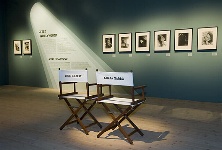
Only five cities hosted the exhibit: |
|
USA: Santa Barbara Museum of Art, May 28–August 21, 2005
USA: New York September 17–November 13, 2005
USA: Scandinavia House: The Nordic Center in America, 2005
Sweden: Nordiska Museet, Stockholm June 1–September 3, 2006
Germany: Frankfurt, Deutsches Filmmuseum: February 6 – May 7, 2006
USA: Wichita Art Museum October 29, 2006–January 22, 2007
Germany was chosen because Garbo started her international career there and Sweden because she was born there. Wichita was allowed the rare chance to host because of its long-standing relationship with the Santa Barbara Museum of Art, where the exhibit originated for the 100th anniversary of Garbo's birth in 2005, Reisfield said.
The exhibition provides an unusual opportunity to see original vintage prints of magnificent large-scale portraits from Garbo's private collection taken by some of the greatest photographers of the era. Posters, lobby placards, magazines and other memorabilia will also be on view. Garbo's Garbos is organized by the Santa Barbara Museum of Art and is curated by Robert Dance.
Pictures from the Exhibition |
 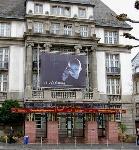 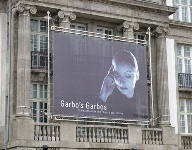
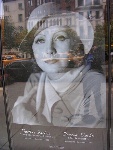 
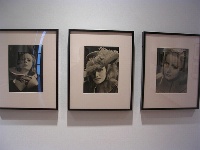 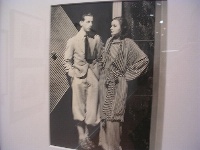
Promotional Pictures |
| 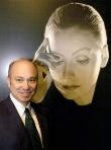 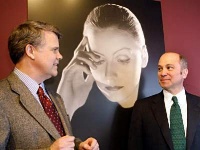
Scott Resfield Robert Dance and Scott Reisfield

Derek Reisfield
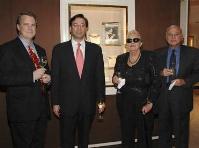
Robert Dance, Derek, Gray and Donald Reisfield
 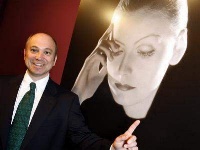
Scott Reisfield

Robert Dance and Scott Reisfield
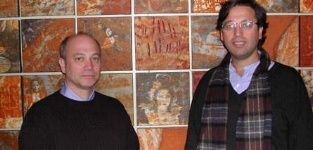
Scott and Derek Reisfield
The Book |
The Book, Garbo: Portraits From Her Private Collection – by Scott Reisfield & Robert Dance, is a collection of never-before-published photographs from the reclusive actress's own collection featuresportraits by Clarence Bull, Arthur Genthe, Ruth Harriet Louise, and other notable photographers that capture the diverse dimensions of the star throughout her storied career. The Book was released in mid 2005 and translated into several languages.
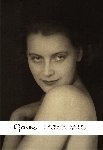
|
| |
| |